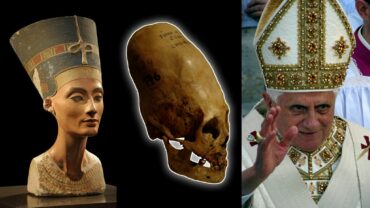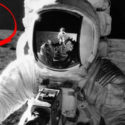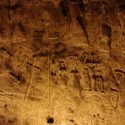Did Ancient Astronauts Visit The Mayans?
The ancient Mayan civilization of Central America has been surprising to archaeologists and researchers for decades. In contrast, one after another, intriguing discovery related to this ancient culture continues to be made.

The Mayans were people obsessed with astronomy, boasting a highly advanced calendar that is still intriguing today. Although the Mayans did not create the Mesoamerican calendar, the extensions and refinements made by them were the most sophisticated.
In their culture, a “feathered god in the form of a serpent” came down from the sky and taught these ancient peoples about astronomy, architecture and construction, among other great things.

Known as Quetzalcoatl in the Nahuatl language of the Aztecs, or Kukulkan in Maya, this entity was highly revered and, before his departure, told the Mayans that he would one day return to Earth.
His return date was calculated to coincide with the end of the calendar, on December 21, 2012, which caused a lot of excitement and fear, leading many to believe that this could be the beginning of the apocalypse.
Although this prophecy did not come true, famous researcher Erich Von Däniken says he believes that this date was calculated based on our calendar, which is somewhat ambiguous about its beginning, the birth of Christ.

Von Däniken claims that there may be about 20 years of error around the day we think Christ was born due to miscalculations in the changes from the old Julian calendar to the current Gregorian calendar, distorting our prediction return of Quetzalcoatl. This would mean we still have a few years to see whether the Mayan prediction will come true.
But Von Däniken disputes, saying that Quetzalcoatl’s return would not involve a Feathered Serpent descending from the sky, but potentially an extraterrestrial.
Did the Mayans have contacts with extraterrestrials?
There are still inexplicable discoveries about the ancient Mayans, which inspire curiosity and fuel the idea that old alien gods may have visited them. With its magnificent pyramids, the city of Tikal is another anomaly that adds to the mysteries surrounding the Mayan civilization.

Discovered in a rainforest in Guatemala, Tikal was one of the Mayan civilization’s largest population and cultural centres, filled with temples, palaces, pyramids, residences, monuments, and even stadiums for the ritual ball game. It was a large city with the potential to house up to 200,000 inhabitants, but with a very peculiar characteristic, it is located 40 kilometres from the nearest water source.
Typically, civilizations build their cities close to water sources, but why would the Mayans have worked so hard to build a city of this size in such an inconvenient place? Von Däniken points to one of the glyphs on a stepped pyramid, where an inscription states that Tikal was a sacred place visited by ancient gods descending from the heavens.
The Mayans built impressive pyramids throughout their vast Empire, 60 of which are in Tikal and others of their most well-known pyramids, including the Temple of Quetzalcoatl, the Temple of the Sun and the Temple of the Moon, are found in Teotihuacan, with these pyramids line up with the three stars in the belt of the constellation of Orion, as well as the pyramids of Giza.

These Teotihuacan pyramids were built under a layer of Mica, a mineral that is not found anywhere in Central America, and this material would have to be extracted and transported from the nearest mine, located in Brazil, crossing a distance of more than 4,000 kilometres, and without the luxury of wheels.
Mica is a highly conductive crystal used in our modern technology in radio frequency capacitors and as an insulator in high voltage equipment because it has a high resistance to heat and fire, facts that make its presence in the und



